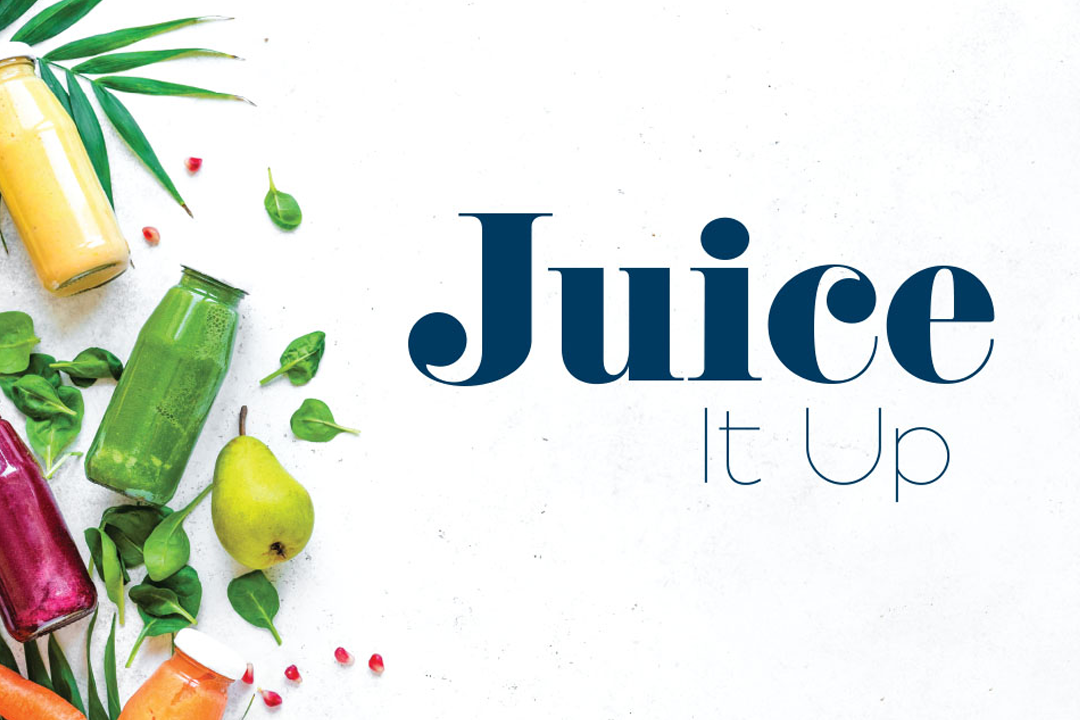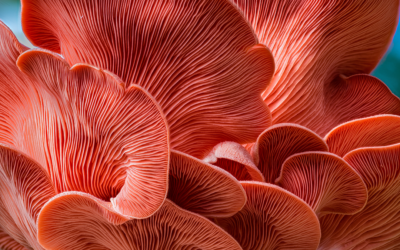Justin Ghofrani, who manages the juicing program at Margie’s Java Joint in Greeley, grew up drinking fresh-pressed carrot and beet juice his dad made for breakfast. Maybe that exposed him to the taste of vegetables—he’s very good about eating them—but he can’t resist a tall, cool glass of cold-pressed juice.
Ghofrani admits, “If you’re looking for health, eat the apple.”
But he doesn’t think biting into an apple can compare to drinking cold-pressed juice. It’s a luxurious vice, he admits, but as far as vices go, it could be worse.
“The juice isn’t bad for me, there’s no artificial ingredients and it’s not going to make me sick,” he says. “The smell of the fresh mix is so beautiful; it’s energizing just to inhale it.”
Which is healthier, the juice or the apple?
One of the first brands touting the benefits of stuffing your garden into a blender and drinking it was V8, a purée of eight vegetables, including tomatoes, carrots, beets and a bunch of leafy greens. While it has no added sugar, as do some juices, it’s high in salt, which is used both as a flavoring and preservative. Because of pasteurization, the heat will kill harmful bacteria, but it also reduces vitamins and minerals.
Turning a wheelbarrow full of fruits and veggies into a glass of healthy juice is more complicated than simply blending it up in your kitchen. And along the way, potential health benefits can get left behind.
That’s because the juicing process removes a plant’s fiber, which helps fill you up, aids digestion and builds good gut bacteria.
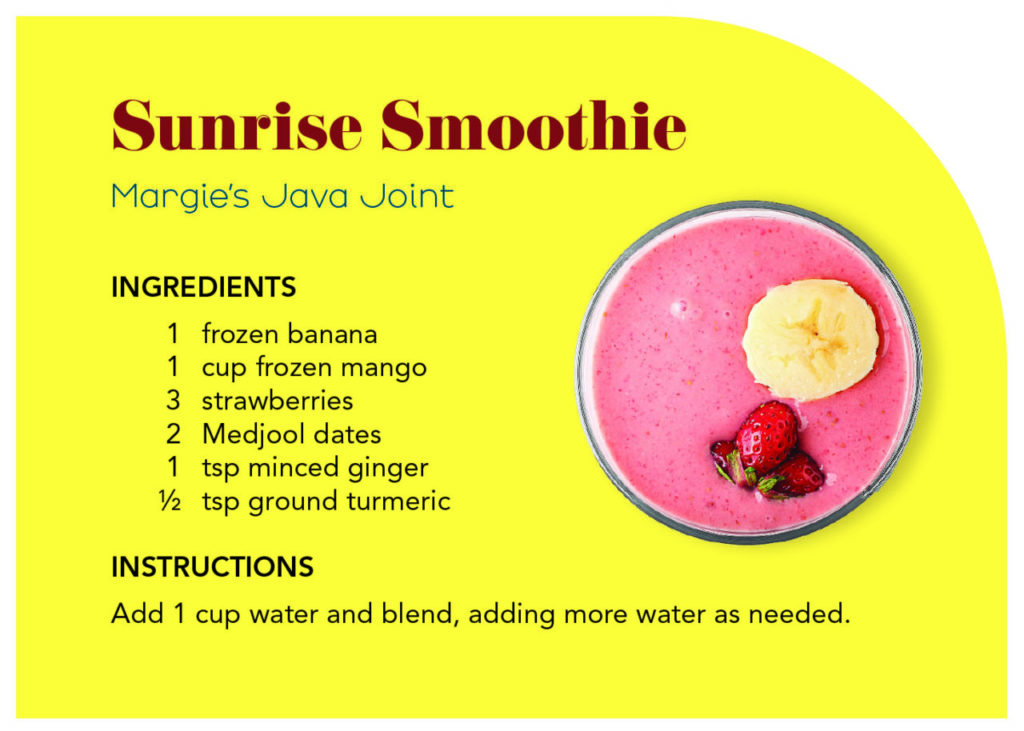
Juicing: a healthy addition to your daily diet
Ghofrani relies on “The Flavor Bible” to develop fruit and vegetable pairings for juice blends at the coffee shop.
Customer favorites are Super Green (kale, cucumber, green apple, celery and ginger), a cider with three varieties of apples and 24 Carrot Gold, a sweet blend of carrots, apples and a kick of ginger.
To design a juice, he builds a base with apples, pears or carrots. Citrus, ginger and turmeric add accents, and then he changes it up with superfoods like beets, kale, peaches, mangos or berries. It’s variation that makes juicing interesting.
Peels add bitterness but have health benefits; it depends on the taste you’re going for. Without a peel, cucumbers taste like watermelon, its distant relative. Ghofrani doesn’t peel beets or carrots unless they’re really dirty.
If you’re picky about what goes in the blend, Colorado-based juice franchise Inta Juice lets customers design their own drink or select from blend ideas. Orders are juiced in front of customers so they can be part of the process.
Cody Neidert, who owns the Windsor Inta Juice with his wife, Allison, says customers think they’ll be hit over the head with vegetable juice’s earthy flavors, but are surprised by the sweetness.
Its Extreme Veggie offers the whole garden: carrots, celery and cucumber create a sweet base, and beets turn it gemlike red because of a pigment called betalains. The taste of spinach and kale is minimal—they add more nutrients than liquid. A squeeze of lime and lemon make it zingy.
Inta Juice’s drinks can be ordered over ice, blended or served straight up. Smoothies are made with real fruit and can be blended with sherbet, non-fat frozen yogurt or dairy-free with ice.
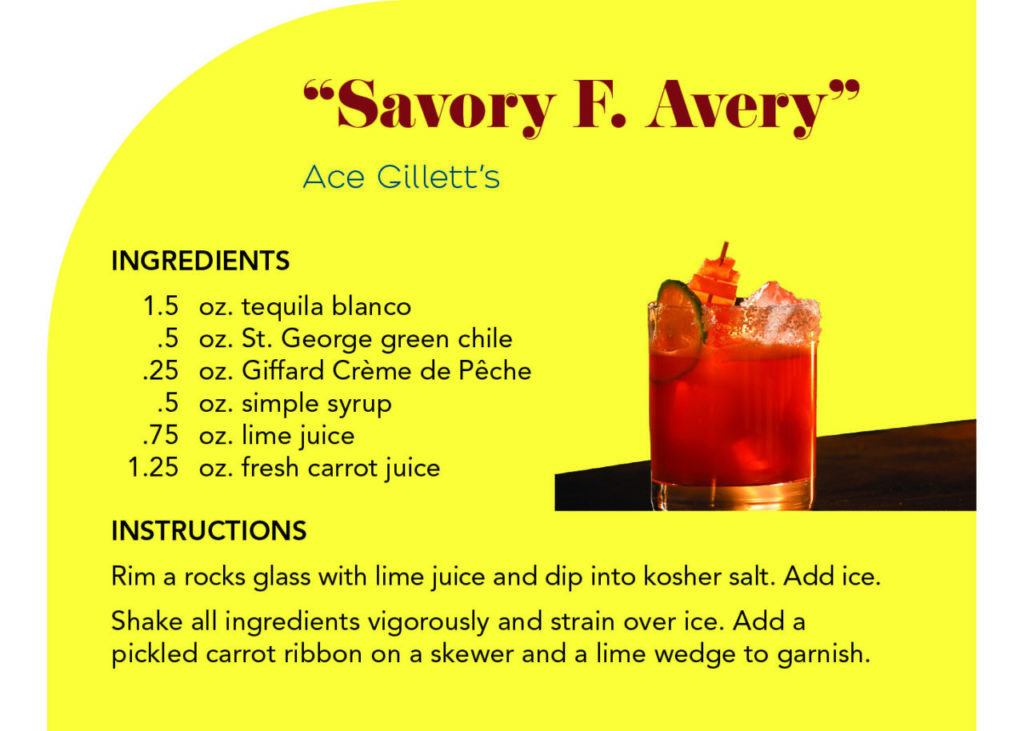
Take it straight up
Veggie or fruit shots offer a hit of vitamins and minerals.
Inta Juice specializes in wheat grass that’s cut fresh and squeezed on site. A one ounce shot of wheatgrass equals 2.5 pounds of green veggies.
“It’s like eating a whole salad,” Neidert says.
The earthy, slightly bitter flavor dominates juice or smoothies, so Neidert recommends tossing back the wheat grass, then washing it down with a shot of orange, apple or guava juice.
That little shot packs a lot of health benefits, including immune system health, additional energy, essential vitamins and minerals, and can act as a detoxifier. Margie’s Java Joint in downtown Greeley presses a strawberry, ginger and lemon shot to boost energy, aid digestion and promote healthy brain and nerve function.
Healthy-ish cocktails
For health-conscious imbibers, Ace Gillett’s bartenders in Old Town Fort Collins hand-press fruits and veggies to squeeze fresh juice for their cocktails.
Ace Gillett’s manager Samantha Garoutte says machinery introduces the pith of the fruit which makes juice taste bitter, so they hand press to protect the flavor.
They juice grapefruits, lemons, limes, carrots, oranges and pineapples daily.
“It’s a labor of love but it is worth doing,” she says.
Drinking juice can be a refreshing way to get vitamins and minerals into your body—and might add vegetables that are more palatable when blended up. Yes, kale, we’re looking at you!
Still, your best bet is before you sip, read the label so you know what you’re drinking.
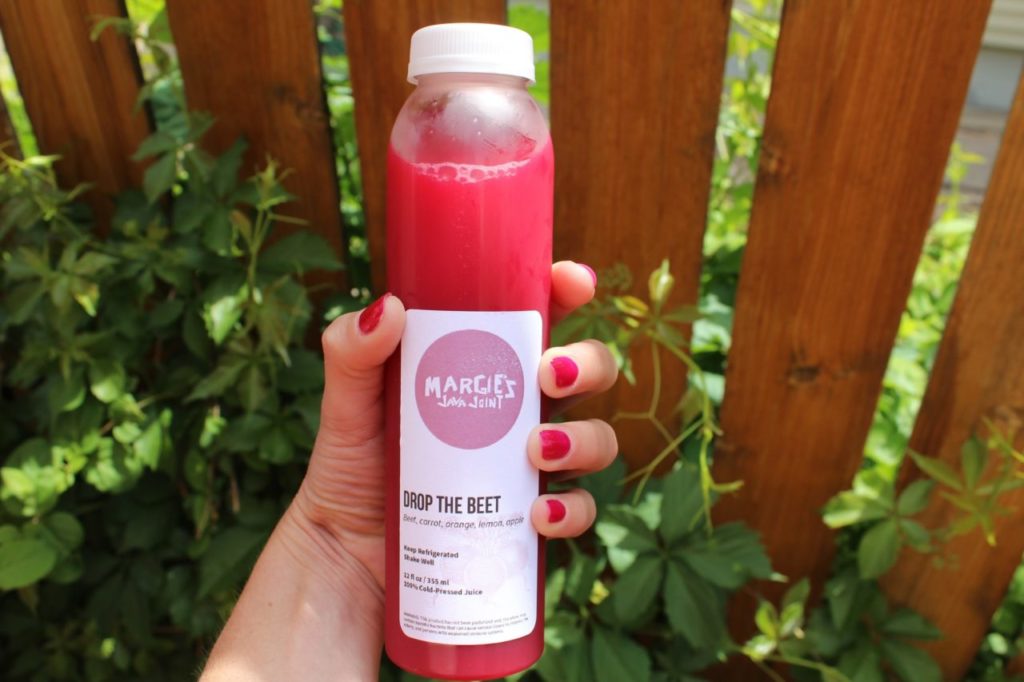
Margie’s Java Joint, Drop the Beet juice blend
How juicers work
DIY juicing technologies have varying benefits. When choosing a juicer, consider whether they are easy to use and clean against their cost.
Cold-press machines, like the Goodnature X-1 Mini that Ghofrani uses at Margie’s, grind whole fruits into pulp and then use thousands of pounds of pressure to extract juice. Cold-press juicers are high yield, generating clearer liquids with a longer shelf life.
The technology extracts the highest amount of nutrients, although liquid volume depends on what you’re pressing.
“You get more out of apples than carrots, but generally, one pound of fruit or veggies produces 10 ounces of juice,” Ghofrani says.
Cold-pressed juice has a five-day shelf life and should be kept refrigerated to prevent bacterial growth.
Centrifugal juicers shred fruits and veggies with a blade and then spin them, separating solids from liquids. Fast and efficient, centrifugal juicers are less expensive and offer some nutritional benefits with less effort. Heat-generating centrifugal juicers deplete nutrients but don’t destroy them.


